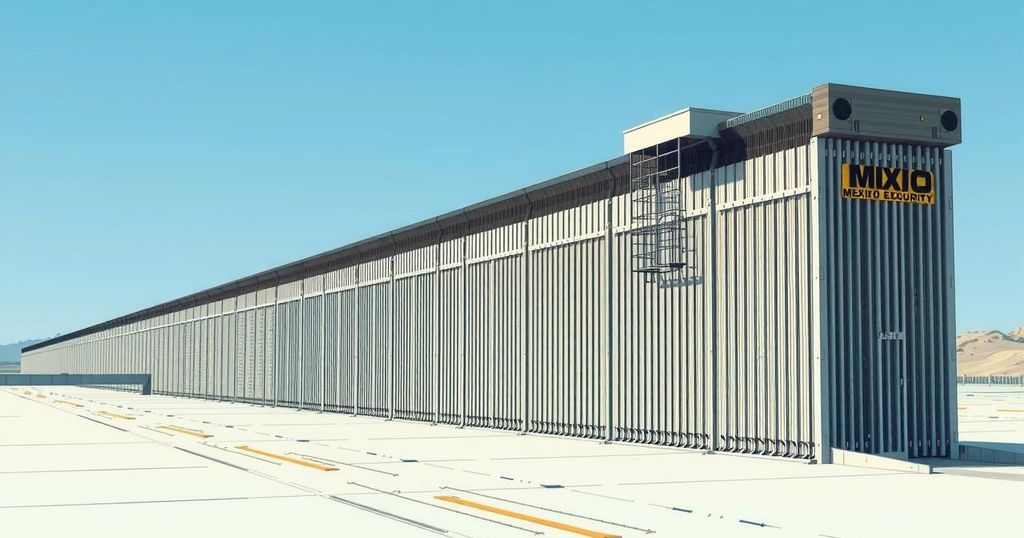Four Ways Trump’s Big Bill Could Change the U.S. Immigration System

President Trump’s immigration bill proposes $150 billion for border security and enforcement over the next four years, reflecting a bold approach to reshape immigration policies. Key allocations include $46.5 billion for the border wall, $45 billion for detention facilities, and $1.25 billion to improve the immigration court system, alongside significant fee hikes for immigrant applications. The bill sparked vigorous debate in Congress and protests on the streets, highlighting the tension around U.S. immigration policies today.
President Donald Trump’s ambitious spending cuts and border security package seeks to inject approximately $150 billion into immigration enforcement over the next four years. This funding aims to support a range of initiatives from extending the southern border wall to building new detention centers and hiring thousands of additional law enforcement staff. The current annual budget for Immigration and Customs Enforcement (ICE) stands at about $10 billion, and this new funding, if passed by Congress, could significantly reshape the landscape of U.S. immigration.
The Senate is navigating its own version of the proposed bill, which largely aligns with the House’s roadmap on these issues. Recently, Republicans have turned attention to sometimes violent protests sparked by Trump’s immigration policies to advocate for swift passage, despite Democratic resistance. During the unrest in Los Angeles earlier this June, House Speaker Mike Johnson remarked, “The lawlessness happening in LA is ANOTHER reason why we need to pass the One Big Beautiful Bill IMMEDIATELY.”
Yet, much about the proposed legislation remains unclear. “One thing about this bill, these sections are super vague,” noted Adam Isacson, a researcher with the Washington-based group WOLA. He highlighted that some significant funding amounts are described with only minimal detail.
Among the key components of this 1,000-page bill, the first is the border wall, with $46.5 billion allocated for an “integrated border barrier system,” which includes enhancements like new fencing, water barriers, and advanced technologies. The bill aims to complete a total of 701 miles of walls and 900 miles of river barriers along the U.S.-Mexico border. Republican Rep. Mark Green of Tennessee emphasized, “Any lawmaker who claims to care about border security will need to put their money where their mouth is and work to advance these recommendations.”
However, the actual impact of constructing the wall is muddled. Illegal border crossings dropped following Trump’s earlier immigration actions, but experts caution against premature conclusions regarding the wall’s efficiency. Critics point out that human smugglers adapt their methods, circumventing even the most fortified barriers.
Another critical element of the bill is its proposal for $45 billion to expand immigrant detention facilities and staff. Furthermore, ICE aims to boost its current capacity from around 41,000 to over 100,000 detainees. This raises concerns about the effectiveness and morality of increasing deportation numbers. Group executives have described plans to operate almost like a business, aiming for speedy delivery of deportees, echoing a phrase from acting ICE director Todd Lyons who described the desired deportation pace as akin to “Amazon, trying to get your product delivered in 24 hours.”
Moreover, a substantial $1.25 billion has been earmarked for the immigration court system, earmarked to hire more judges and expand resources. Currently, the system is overwhelmed, with judges facing a backlog of over 3.6 million cases due to insufficient staffing। Greg Chen, director for the American Immigration Lawyers Association, voiced concern, stating that rising courthouse arrests indicate an administration strategy to bypass the courts altogether.
Lastly, the bill seeks to overhaul immigration fees dramatically. It proposes new charges for previously free services, like an asylum application fee of $1,000 and a $550 charge for employment applications. While some increases may be manageable for wealthier immigrants, they could pose significant hurdles for poorer applicants, potentially altering millions of individuals’ plans to seek refuge or a new life in the United States.
In summary, President Trump’s proposed immigration bill is poised to radically alter the U.S. immigration framework, featuring extensive funding and legislative changes. If successful, the plan would boost enforcement capabilities, enhance barriers, expand detention facilities, overhaul court capacities, and impose new financial burdens on immigrants. However, the long-term effectiveness and implications of these changes remain uncertain, particularly amid significant backlash and protests.
In conclusion, President Trump’s proposed immigration bill, with its substantial funding and wide-ranging implications, is designed to reshape the U.S. immigration system fundamentally. It emphasizes increased border security, expanded detention capacities, a revamped immigration court structure, and heightened fees for immigration services. While supporters argue these measures are vital for national security, critics are concerned about their potential effects on vulnerable populations and the legal immigration process as a whole. With many uncertainties still surrounding the legislation, its future remains clouded, prompting a nationwide discussion on immigration policy and reform.
Original Source: www.pbs.org








